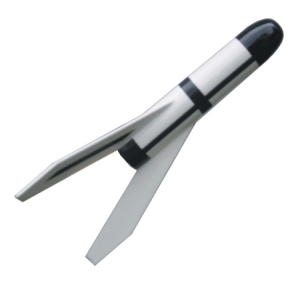1974_Trident
Well-Known Member
- Joined
- Dec 2, 2009
- Messages
- 176
- Reaction score
- 1
Along with the big rockets in my last order came a few Alphas. One of them is for my oldest son, I want him to build a rocket from start to finish without my assistance. Another is for myself.
I am not using the 18mm motor mount since the body tube chambers a 24mm motor without any additional motor mount type parts. I intend to launch this rocket on friction mounted D-F engines and I suppose I will have to do some reinforcing to get the rocket to stay together during flight.
For starters I will treat the entire body tube to a layer of 2 oz. fiberglass. the fins will also get a layer of fiberglass on either side, in fact I intend to make a continuous piece of fiberglass from tip the left facing side of one fin, around the body tube and to the tip of the right facing side of the adjacent fin so that the body tube ends up with two layers of glass around the tube/fin joints.
I am not using the 18mm motor mount since the body tube chambers a 24mm motor without any additional motor mount type parts. I intend to launch this rocket on friction mounted D-F engines and I suppose I will have to do some reinforcing to get the rocket to stay together during flight.
For starters I will treat the entire body tube to a layer of 2 oz. fiberglass. the fins will also get a layer of fiberglass on either side, in fact I intend to make a continuous piece of fiberglass from tip the left facing side of one fin, around the body tube and to the tip of the right facing side of the adjacent fin so that the body tube ends up with two layers of glass around the tube/fin joints.





